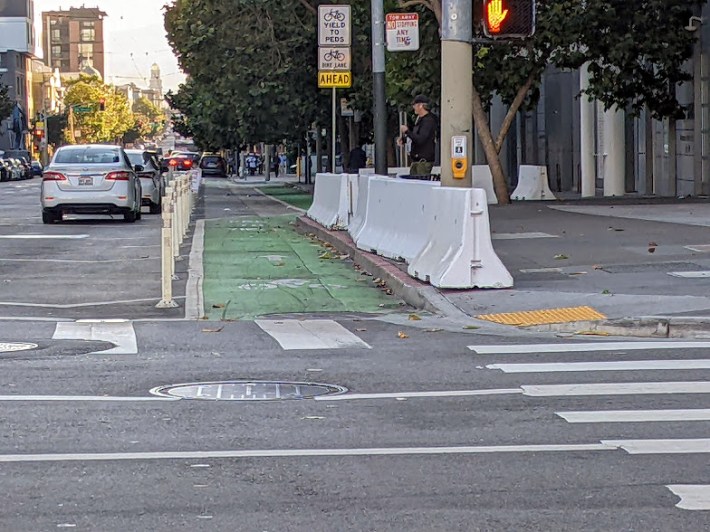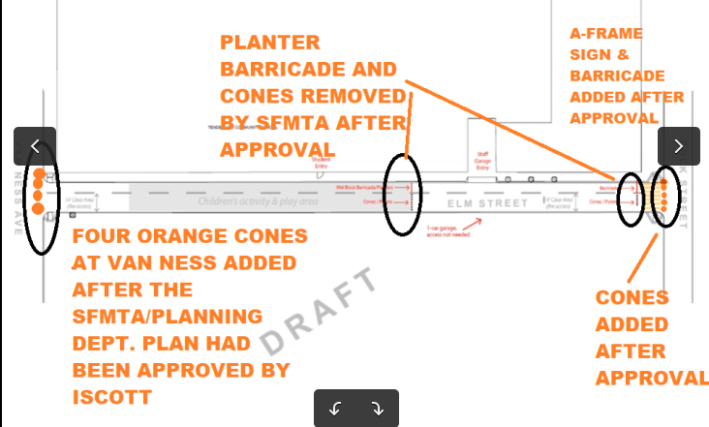SFMTA finally agreed to let the Tenderloin Community Elementary School turn Elm alley into a school streets for its kids in October. However, they have now informed the school that they have to use traffic cones and flimsy signs to stop errant motorists, as seen in the agency's own drawing in the lead image.
"SFMTA's mock-up of the site plan (which is substantially different from anything previously discussed, submitted, or approved)" includes rubber traffic cones and none of the proposed steel planters, explained Tenderloin advocate Scott Bravmann, in an email to Streetsblog about SFMTA's latest obstructionism. He highlighted the irony that the city uses "multi-ton concrete barricades in the middle of Capp Street" to stop sex workers. For conferences, it uses concrete and steel gates. But to protect the Tenderloin's children on Elm, SFMTA thinks rubber cones will suffice.

Streetsblog readers will recall that Mayor London Breed approved $4 million for community-driven projects in the Tenderloin in 2022 under the banner of the "Tenderloin Community Action Plan." Part of that plan includes the Elm Alley proposal to create a school street for Tenderloin Community Elementary.
Bravmann, who's been fighting for this for years along with the school and other Tenderloin advocacy groups, was continually blocked because there are a couple of driveways to parking lots on the Polk side of Elm. Bravmann's solution was simple: just place the barricades a few feet past the driveways and start the school street far enough up Elm so those are still accessible (see diagram below). But, claimed SFMTA, drivers who turn down Elm might get stuck if they don't realize the rest of the street is blocked off.

Of course, another obvious option would be to remove a couple of on-street parking spaces on Elm near Polk to make more room for unskilled drivers to turn around or back up. But an SFMTA spokesperson emailed Streetsblog saying that "removing on-street parking spaces is not a reasonable solution."
After Streetsblog's post about this in October, and the intervention of Supervisor Dean Preston, SFMTA relented and said they would allow the mid-block closure. But now they are objecting to the use of solid planters and instead just want the traffic cones and signs pictured in the lead image. This is a return to SFMTA's obstructionist position, which makes it unsafe and impractical to create a school street in the first place.
Preston will be intervening yet again. "We continue to urge MTA to find a path forward to deliver for these families as soon possible," the Supervisor told Streetsblog. "My office is in communication with the MTA, volunteers, and the TL Community School to ensure this community-supported project is activated in a safe and inviting way."

In Streetsblog's view, it is infuriating that SFMTA staff removed the planters from the street layout plans - they are the one thing that could physically stop a motorist from racing down the street and running over a child. This whole exercise is reminiscent of SFMTA's sabotage, at the mayor's behest, of the Slow Streets program last year. The mayor should instead be demanding the street get blocked off like the parklet pictured above in Davis. That's how a competent city transportation department keeps kids safe: with concrete and steel, not rubber cones.






